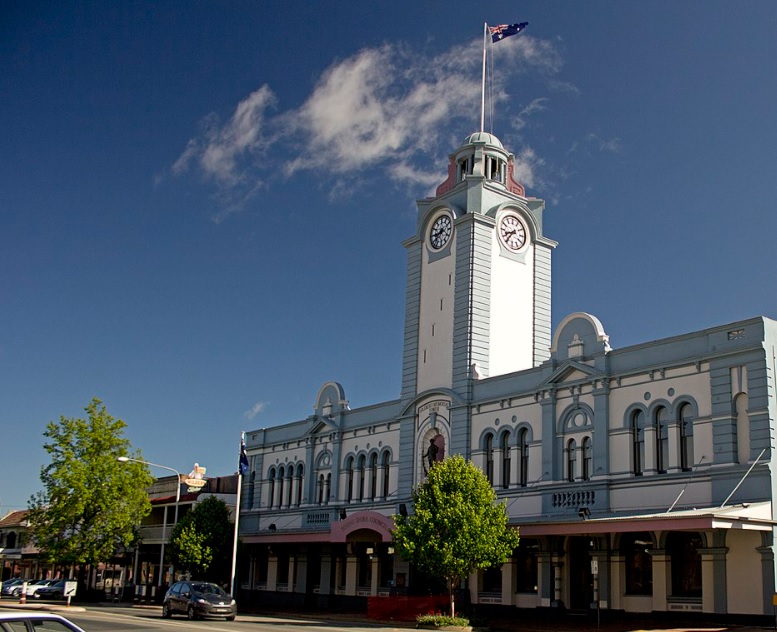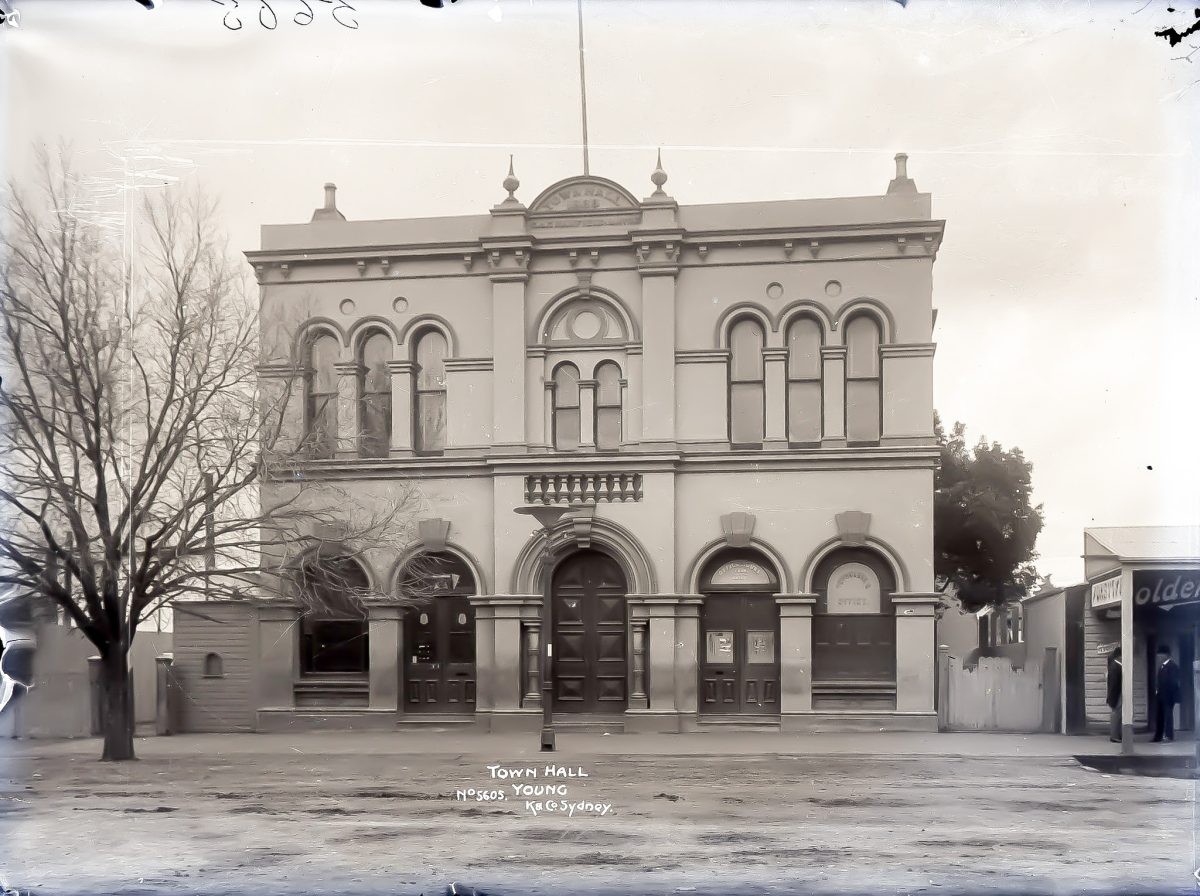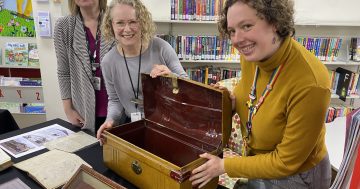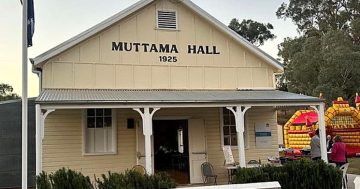
Young’s civic centrepiece has always been the town hall, which started life in the 1870s as a Mechanics’ Institute. Photo: Edwina Mason.
Rising above the pastel-grey-and-pink Young Town Hall like a decorative flourish on a grand cake, the Soldiers’ Memorial Tower and Clock has stood as the town’s iconic civic centrepiece for more than a century.
Yet in recent years, its neglected state has become a source of embarrassment.
First, the clock fell silent, then the tower gradually became shrouded in grime and pigeon droppings, turning what was once a proud civic landmark into a point of local exasperation.
Though generations of Anzac Day ceremonies have unfolded beneath its watchful gaze, the bronze digger at its base has endured the same quiet indignity.
But this isn’t just any digger.
The Thuddungra-based Caldwell family suggested commissioning the statue to honour their son, Anthony Caldwell, who was killed in England while training as a pilot with the Flying Corps, and financed it themselves, spending £330 to commemorate Anthony and all local residents who served in the war.
The model was Everard Christopher Powderly, a corporal awarded the Military Medal for Bravery, chosen to retain a family connection: his mother and Anthony’s mother were sisters.
Now, Hilltops Council is finally acting: a $14,000 cleaning of the facade and memorial tower, scheduled for 18-20 November, will restore one of Young’s most recognisable landmarks to public view.
For locals who have watched the civic centre gradually darken and deteriorate, the cleaning will undoubtedly offer a spark of joy to the Cherry Festival celebrations ahead.
But while the cleaning addresses one problem, it also exposes a far more serious one in the grand old building below.
The story of Young Town Hall begins long after gold was discovered in a creek on a pastoral run 165 years ago, when residents began agitating for a place for community, culture, and intellectual pursuits.
Early ambitions were embodied in the School of Arts, established in 1870.
Initially operating from rented premises, the committee ceased after a few years, but the community soon sought a more permanent home.
In May 1875, the foundation stone for the Mechanics’ Institute was laid by local businessman WJ Watson, marking the start of what would become the town’s most important civic building.

The Young Town Hall back in 1901 by Charles Kerry (1857-1928). Photo: Courtesy Rick Drury.
When completed, it housed the School of Arts’ books, a reading room, and newspaper subscriptions.
Financial difficulties plagued the institute, and by 1886, the municipal council was asked to take over the building as a town hall and public library.
By the early 1920s, the former Mechanics’ Institute was too small for the town’s growing administrative needs.
Young Municipal Council and Burrangong Shire Council shared cramped offices, which one alderman described as “an antiquated dog-box that is a disgrace to the progressive township of Young”.
In 1922, the council decided to expand the Mechanics’ Institute and incorporate a war memorial.
New offices were constructed on the south-western side of the building, with the Soldiers’ Memorial Tower added to link the old and new sections.
The extensions, unveiled on 31 May, 1924, cemented the tower’s role as both a civic and commemorative symbol — the crowning flourish on Young’s civic “cake”.
Further modifications followed.
In 1952, Burrangong Shire built its own offices in Lovell Street, freeing the way for Young Municipal Council to remodel its side of the town hall, a project completed in 1956.
The story of consolidation came full circle in 1980, when the two councils amalgamated.
The following year, nearly $500,000 was invested in the town hall to accommodate the combined administration: ground-floor shops were converted into offices, and internal walls were removed to create a more functional layout.
Further work in 1987 addressed rising damp and roof leaks, highlighting the building’s ongoing maintenance challenges.
Hilltops Council has long been aware of community and employee concerns about the building.
A comprehensive defect report tabled at a May 2025 meeting revealed the damage that lay beneath the roof was primarily the result of the roof.
The report found that the town hall’s low-pitched roof and box gutters have caused repeated leaks, resulting in internal damage and mould — now recognised as a work health and safety (WHS) concern.
So now the council has to consider either a full roof redesign, costing $2.345 million, or a like-for-like replacement at $1.703 million.
Yet amid these daunting challenges and ongoing council debate, the $14,000 cleaning of the Soldiers’ Memorial Tower and Town Hall facade represents a tangible, visible win.
The work will take place at night under floodlights, using — fittingly for the national cherry capital — a good old cherry picker.
Hiring a company using drone technology was considered, but the initial quote exceeded $15,000 plus accommodation, and the process could take several months to arrange.
And for now, the clock will have to wait.










